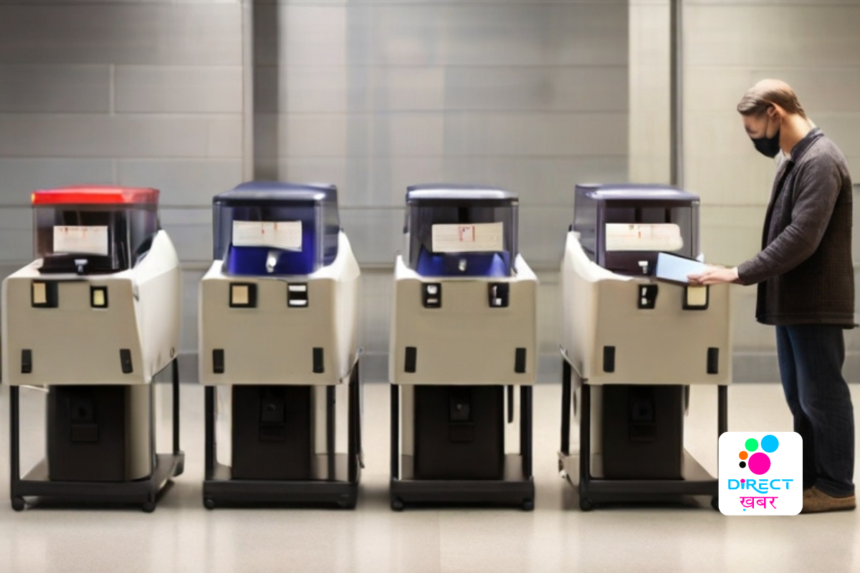Unveiling the Evolution of Voting Technologies
Voting is a cornerstone of democracy, ensuring citizens’ voices are heard in governance. Over the years, the methods and technologies used in vote have evolved significantly, driven by the need for efficiency, accessibility, and, most importantly, security. From paper-based ballots to electronic systems, the journey of vote technologies reflects a constant quest for improvement. This essay explores this evolution, highlighting key innovations and their implications for democratic processes.

The Era of Paper Ballots:
For centuries, paper-based vote systems were the norm. Voters would mark their choices on paper ballots, which were then manually counted. While simple and familiar, this method was susceptible to errors, tampering, and logistical challenges. The infamous hanging chads debacle during the 2000 U.S. presidential election underscored the vulnerabilities of paper-based systems, prompting calls for modernization.
The Rise of Electronic Voting Machines:
The introduction of electronic vote machines (EVMs) marked a significant shift in vote technology. EVMs offered faster tabulation, reduced the risk of human error, and accommodated voters with disabilities through accessible interfaces. However, concerns about security and reliability soon emerged. Reports of malfunctions, software glitches, and the lack of a paper trail raised doubts about the integrity of electronic systems.
The Emergence of Internet Voting:
With the advent of the internet, the concept of remote electronic vote gained traction. Internet vote promised unprecedented convenience and accessibility, allowing voters to cast their ballots from anywhere with an internet connection. Several countries, including Estonia and Switzerland, experimented with internet voting in local and national elections. However, cybersecurity experts warned of the inherent risks, citing the potential for hacking, manipulation, and privacy breaches.
Blockchain Technology and Verifiable Voting:
Blockchain technology emerged as a potential solution to enhance the security and transparency of electronic vote. By leveraging cryptographic techniques and decentralized networks, blockchain-based vote systems aim to create tamper-resistant, auditable records of each vote. These systems offer verifiable voting, allowing voters to independently verify that their ballots were counted as cast. While still in the experimental stage, blockchain voting holds promise for ensuring the integrity of electoral processes.
Hybrid Voting Systems:
Recognizing the limitations of purely electronic or paper-based systems, some jurisdictions have adopted hybrid vote models. These systems combine the convenience of electronic vote with the assurance of a paper trail. For example, voters may use electronic machines to mark their ballots, which are then printed and deposited into secure ballot boxes. This approach provides redundancy and enhances confidence in the integrity of the voting process.

The Role of Biometrics and Authentication:
Biometric authentication, such as fingerprint or facial recognition, offers another layer of security in vote systems. By verifying voters’ identities based on unique physiological characteristics, biometric technology helps prevent impersonation and unauthorized access. However, concerns about privacy, data protection, and the reliability of biometric systems remain significant hurdles to widespread adoption.
Challenges and Controversies:
Despite the promise of advanced vote technologies, challenges and controversies persist. The cost of upgrading infrastructure, ensuring accessibility for all voters, and addressing cybersecurity threats are formidable tasks for election administrators. Moreover, debates over the integrity and fairness of electronic voting continue to divide policymakers and the public. Achieving a delicate balance between innovation and security remains a central challenge in the evolution of vote technologies.
The evolution of voting technologies reflects a constant pursuit of efficiency, accessibility, and security in democratic processes. From paper ballots to blockchain-based systems, each innovation has brought its own set of advantages and challenges. As we look to the future, it is essential to prioritize transparency, integrity, and inclusivity in designing voting systems. By harnessing the power of technology while safeguarding fundamental democratic principles, we can ensure that the voice of every citizen is heard loud and clear.






